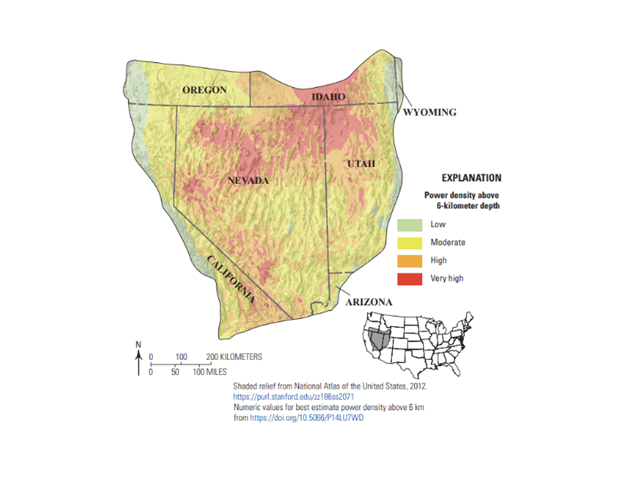The US is sitting on a largely untapped energy source that could significantly boost its electricity supply, according to a new report from the US Geological Survey (USGS).
The study examines the potential of geothermal energy – the natural heat simmering beneath the Earth’s surface – as a major power source. While the US already uses geothermal energy, it currently accounts for less than 1 percent of the nation’s electricity.
In an updated assessment of a 2008 study, the USGS now estimates that geothermal resources in Nevada’s Great Basin and surrounding areas could generate electricity equivalent to 10 percent of the country’s current power supply.
However, there are some hurdles in the way before they can get their hands on it. Practically all geothermal power is generated from hydrothermal systems, where underground water is naturally heated by hot rocks beneath the surface. Steaming vents, hot springs, and geysers are visible signs of this in action.
Much larger reserves of thermal energy are locked deeper within impermeable, dry rock layers. Tapping into this heat requires enhanced geothermal systems, which involve drilling over 6 kilometers (3.7 miles) underground to create pathways that allow water to circulate, absorb heat, and return the energy to the surface to produce electricity. The process is a bit like creating human-made hydrothermal systems.
Technology to achieve this has been around for decades and many countries have been exploring its possibilities. The USGS report suggests that the time may be right for the US to scale up its own enhanced geothermal systems, and the Great Basin stands out as a prime candidate for expansion.

Map showing the geothermal energy that’s beneath the Great Basin in Nevada and parts of neighboring states.
Image credit: USGS (Public Domain)
To gauge the potential energy resources in the Great Basin, USGS scientists used underground temperature maps, heat flow measurements, and advanced modeling techniques to assess how efficiently heat could be extracted and converted into electricity.
“We focus on undiscovered resources that have yet to be fully explored, let alone developed. We launched this work in the Great Basin because of the area’s history of geothermal activity – and we found even more potential for baseload power than had previously been known,” Sarah Ryker, acting director of the USGS, said in a statement.
“Leveraging this work along with artificial intelligence and machine learning techniques will help us assess the entire nation’s potential for geothermal energy with greater speed and accuracy,” she added.
Following their assessment of the Great Basin, researchers will now shift focus to the Williston Basin in North Dakota.
It’s certainly a promising idea, but it isn’t without grave risks. Just like fracking for oil, enhanced geothermal systems run on the idea of pumping water deep underground, a risky approach that may increase the likelihood of triggering earthquakes.
The scientific community remains divided on just how risky this is. In 2018, a panel of 14 international experts was quizzed on the issue, and their responses revealed a wide range of opinions, although most suggested that caution was needed. This is not even mentioning the other concerns of underground water contamination, air pollution, and land use.
The potential spoils of enhanced geothermal systems are alluring, but unlocking their full promise will require balancing innovation with serious caution.
Source Link: Over 10 Percent Of US Electricity Could Be Supplied By Geothermal Energy, Says USGS